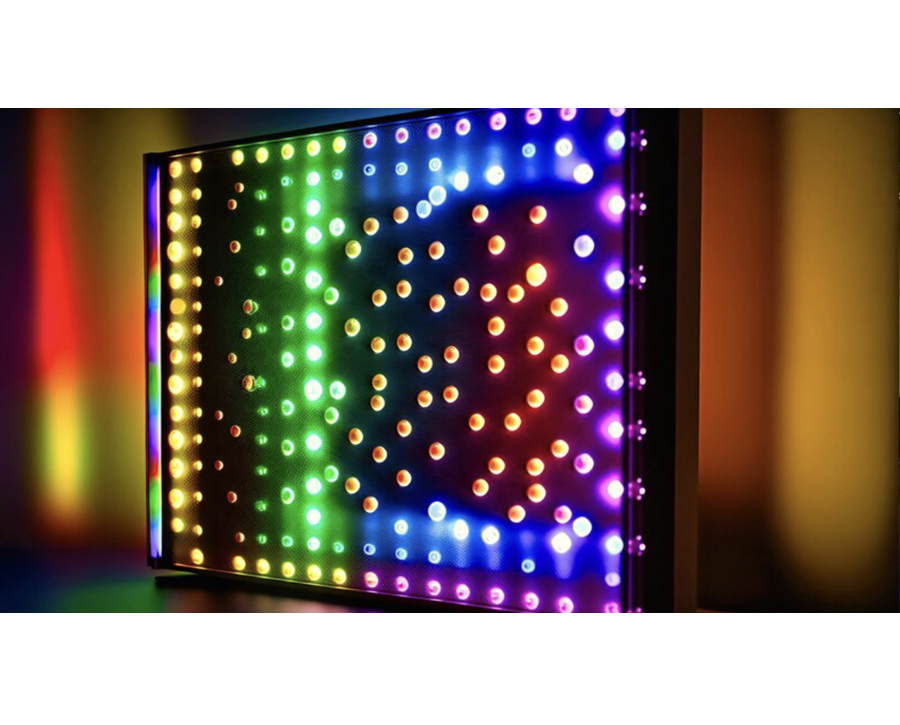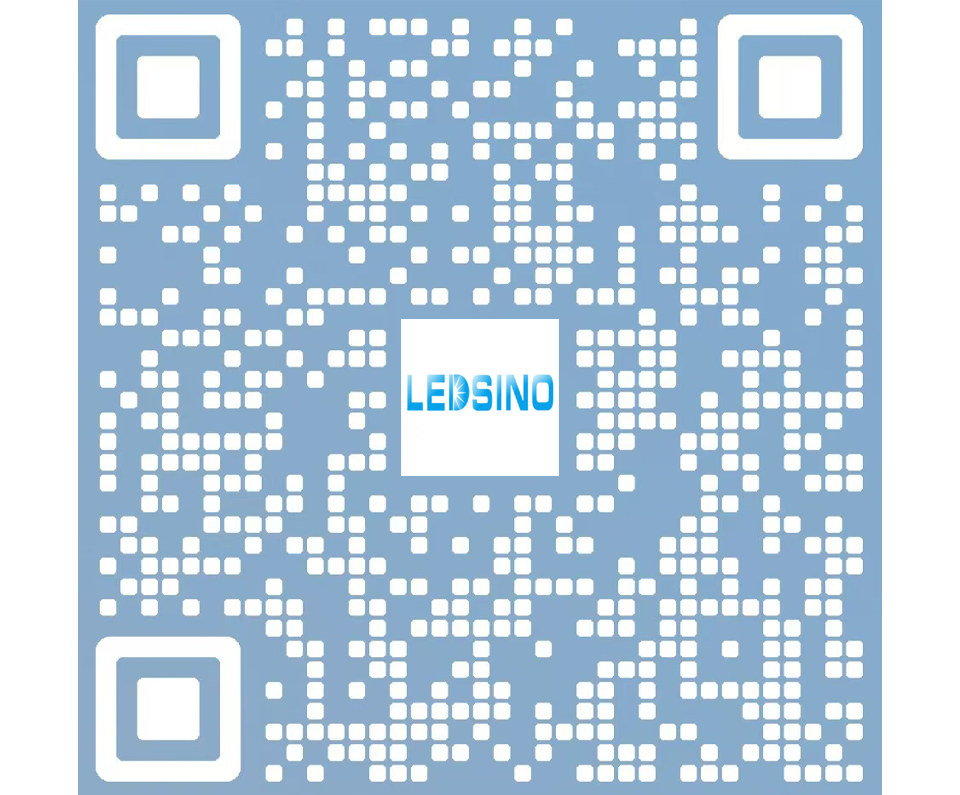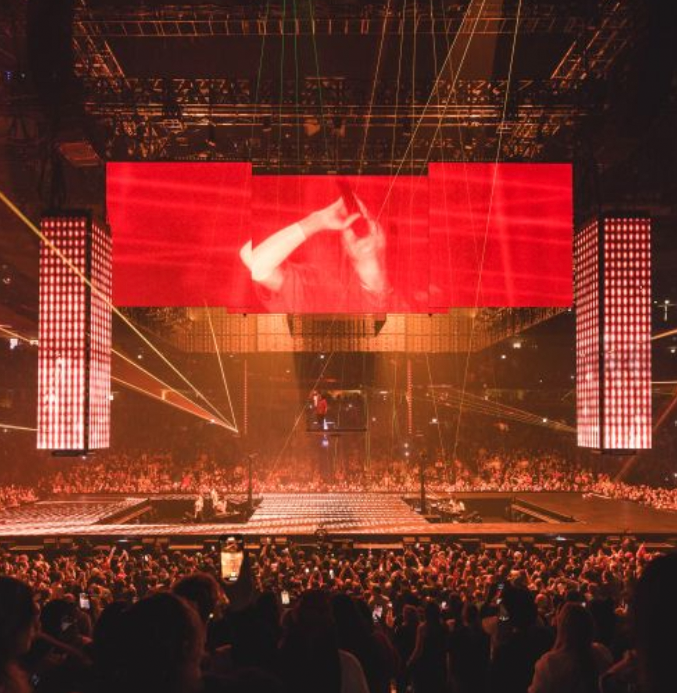
Imagine enjoying stunning clarity and brilliant colors on tiny, energy-efficient screens. Small LED displays, powered by advanced Mini-LED and Micro-LED technologies, are transforming how we experience visuals in devices like TVs, smartphones, and wearables.
What is a Small LED Display?
Small LED displays are portable electronic displays that use complex light-emitting diode (LED) technology to achieve extremely crisp picture quality while occupying a small physical space. Due to the use of extra-small LEDs compared to regular LCD or OLED panels, small LED displays afford themselves higher brightness, contrast, and energy efficiency.
These displays do not operate on the principles of traditional screen technologies. First of all, Small LED displays are better than LCD screens. Small LED displays provide more focused local illumination than LCDs and exhibit higher contrast at lower power levels than the larger, less uniform backlights typical of LCDs.
Moreover, small LED displays provide higher brightness compared to OLED displays while avoiding OLED problems like burn-in or shorter life spans. Small LED displays are most appropriate for devices where sharpness and energy are critical, such as TVs and gaming monitors.
Introduction to Mini-LED Technology
Mini-LED technology represents a significant advancement in display innovation. These LEDs measure from 100 to 200 microns and are densely packed to create localized dimming zones. This allows for precise control of brightness and contrast across the screen.
Mini-LED technology works by dividing the backlight into thousands of these dimming zones. Every sector can shift its illumination levels allowing for better control with lights in various regions of the screen. It forms deeper blacks and lighter peaks, which makes for HDR content perfect viewing since the TV births the bestiations.
Advantages of Mini-LED Displays:
- Superior brightness and contrast: Mini-LED excels in delivering bright highlights and deep blacks, perfect for HDR and well-lit settings.
- Enhanced durability: Unlike OLEDs, Mini-LED displays avoid burn-in issues, offering long-term reliability.
- Affordable performance: Mini-LED displays approach OLED-level quality at a lower cost, especially for larger screens.
But just like any other technology, Mini-LED has its own drawbacks. The use of several dimming zones can cause “blooming,” a situation where light from bright regions diffuses into a darker area. Further, as compared with the traditional LED displays, the process of production is longer and expensive as well.
Mini-LEDs are appliously used in OLED panels where there is needed high picture realism, for example, in gaming monitors and premium laptops. The population of technologies described is still high, mainly due to its relatively low cost and high performance.
Introduction to Micro-LED technology
Mini-LEDs have a backlight behind the screen, but Micro-LEDs are direct-type emissive diode tiles. Each diode will appear as a pixel and is a light-emitting diode. This overcomes the need for a distinct backlight and can have really fantastic control of the brightness and colour.
Key Benefits of Mini LEDS
- Unmatched picture quality: Micro-LEDs are even shinier, deliver higher contrast, and paint colors more accurately than OLEDs.
- Energy efficiency: As there is no necessity to set up backlighting, power consumption of Micro-LED displays is drastically lower, which will be useful in portable electronics.
- Durability: What’s more, these displays are not vulnerable to burn-in.
Fingers crossed that as far as manufacturing is concerned, it becomes cheaper to be incorporated in other devices in the future.
Mini-LED vs. Micro-LED: Key Differences
Size
This size difference impacts their resolution as well as their best use cases. Micro-LEDs provide higher pixel density and fine-tuned light management.
Brightness
Despite the fact that OLED and Mini-LED panels are quite popular, Micro-LEDs have a higher level of brightness and energy efficiency since any pixel can be a source of light. Mini-LEDs, in contrast, are even brighter because of the company’s backlight system. They are less power-efficient but good for high brightness applications..
Production Cost
Mini-LEDs cost less to produce since they integrate already-existing elements of traditional LED manufacturing. Micro-LEDs, on the other hand, have high production difficulties, such as the placement of the pixels, which are more complex as compared to the mini-LEDs.
Applications of Mini-LED and Micro-LED
Mini-LED will suit high brightness applications with comparatively lower manufacturing cost. For example, gaming monitors, TVs and digital signage. This increases contrast, benefits HDR content and offers localized dimmable zones when used in home entertainment.
Micro-LED, delivering high brightness and fine pixel control is suitable for premium-tier wearable devices. AR glasses, and next generations of HUDs. It is also used increasingly in ultrahigh-definition displays for professional applications. But with high cost of production making wider use expensive.
Wearable technology benefits significantly from Micro-LED’s compact size and energy efficiency, enabling longer battery life. Meanwhile, Mini-LED continues to bridge the gap between traditional LCDs and next-generation displays, offering a balance of performance and affordability.
Challenges and Future of Small LED Displays
Both Mini-LED and Micro-LED technologies face challenges. Mini-LED displays require efficient heat dissipation and optimized dimming zones to avoid halo effects in high-contrast images. Micro-LED, despite its potential, struggles with scalability due to production precision and cost.
Future advancements aim to address these issues. Mini-LED technology is evolving with more dimming zones and thinner backlights to narrow the performance gap between OLED and Micro-LED. Research into manufacturing processes like Graphene Layer-Based Micro LED Structure Transfer may reduce Micro-LED costs and enable broader applications.
As the demand for better display technologies grows, innovations will likely lead to hybrid approaches, integrating the best features of Mini-LED and Micro-LED. This evolution promises a future where displays are brighter, more efficient, and affordable across various devices.
Conclusion
Mini-LED or Micro-LED? It will, therefore, be up to you to offset each of the technologies and the benefits that come with the same. Whether it’s a TV, monitor, or a smartwatch, now you know what to look for when making a purchase.

Enter the digital world with our advanced display technologies.



